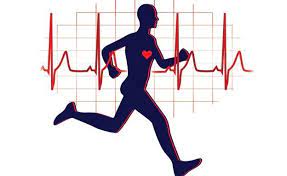
Cardiovascular endurance, also known as aerobic endurance or cardiorespiratory fitness, refers to the ability of the heart, lungs, and circulatory system to deliver oxygen and nutrients to working muscles during sustained physical activity. It involves the efficient functioning of the cardiovascular and respiratory systems to support prolonged exercise and maintain a high level of performance without undue fatigue. Here are key aspects and considerations related to cardiovascular endurance:
Components of Cardiovascular Endurance:
- Heart Health:
- The heart is a vital organ in cardiovascular endurance. Regular aerobic exercise strengthens the heart muscle, improving its ability to pump blood efficiently.
- Lung Capacity:
- Cardiovascular endurance involves the capacity of the lungs to take in oxygen and expel carbon dioxide. Effective respiratory function supports oxygen exchange during physical activity.
- Blood Circulation:
- Efficient blood circulation is essential for delivering oxygen and nutrients to muscles and removing waste products. Improved circulation supports endurance by enhancing nutrient supply to working tissues.
- Muscle Oxygenation:
- Adequate cardiovascular endurance ensures that muscles receive a continuous supply of oxygen, which is crucial for energy production during aerobic activities.
Benefits of Cardiovascular Endurance:
- Improved Stamina:
- Individuals with good cardiovascular endurance can engage in sustained physical activity for longer durations without experiencing excessive fatigue.
- Enhanced Performance:
- Athletes and fitness enthusiasts benefit from improved cardiovascular endurance, as it allows them to perform better in aerobic activities such as running, cycling, and swimming.
- Weight Management:
- Regular cardiovascular exercise contributes to caloric expenditure, supporting weight management and promoting a healthy body composition.
- Reduced Risk of Chronic Diseases:
- Maintaining cardiovascular health is associated with a decreased risk of chronic conditions, including heart disease, diabetes, and hypertension.
- Mental Well-Being:
- Cardiovascular exercise releases endorphins, promoting feelings of well-being and reducing stress and anxiety.
- Efficient Recovery:
- Good cardiovascular fitness supports quicker recovery after physical exertion, reducing post-exercise fatigue and soreness.
Training for Cardiovascular Endurance:
- Aerobic Exercise:
- Engage in activities that elevate your heart rate and maintain it for an extended period. Examples include running, jogging, cycling, swimming, and brisk walking.
- Interval Training:
- Incorporate intervals of higher intensity within your workout, alternating between periods of increased and decreased effort. This approach enhances both aerobic and anaerobic fitness.
- Long-Distance Workouts:
- Include longer duration workouts to build endurance gradually. These sessions could involve sustained, moderate-intensity activities.
- Cross-Training:
- Incorporate a variety of aerobic exercises to engage different muscle groups and prevent monotony. This may include activities like dancing, rowing, or elliptical training.
- Consistency:
- Consistent training is essential for improving and maintaining cardiovascular endurance. Aim for regular sessions throughout the week.
- Progressive Overload:
- Gradually increase the intensity, duration, or frequency of your workouts to progressively challenge your cardiovascular system.
- Warm-Up and Cool Down:
- Prioritize a proper warm-up before aerobic exercise to prepare your body, and include a cool-down to allow for a gradual return to normal physiological states.
- Individualized Approach:
- Tailor your cardiovascular training to your fitness level, taking into account your health, age, and any pre-existing conditions. Consult with a fitness professional if needed.
Monitoring Cardiovascular Endurance:
- Heart Rate Monitoring:
- Use heart rate monitors to gauge exercise intensity and ensure that you are within your target heart rate zone.
- Rating of Perceived Exertion (RPE):
- Subjectively assess your effort level using the RPE scale, which provides a sense of how hard you perceive the exercise to be.
- Fitness Assessments:
- Periodically assess your cardiovascular fitness through tests like the 1.5-mile run, the Cooper Test, or submaximal cycle tests.
Safety Considerations:
- Medical Clearance:
- Before starting a new exercise program, especially if you have pre-existing health conditions, seek medical clearance from a healthcare professional.
- Proper Technique:
- Ensure that you use proper technique and form during exercise to minimize the risk of injury.
- Gradual Progression:
- Progress gradually in terms of intensity and duration to allow your body to adapt to increased demands.
Cardiovascular endurance is a fundamental aspect of physical fitness that contributes to overall health, well-being, and performance in various activities. Regular aerobic exercise, combined with proper nutrition and overall healthy lifestyle choices, plays a pivotal role in enhancing and maintaining cardiovascular endurance.
